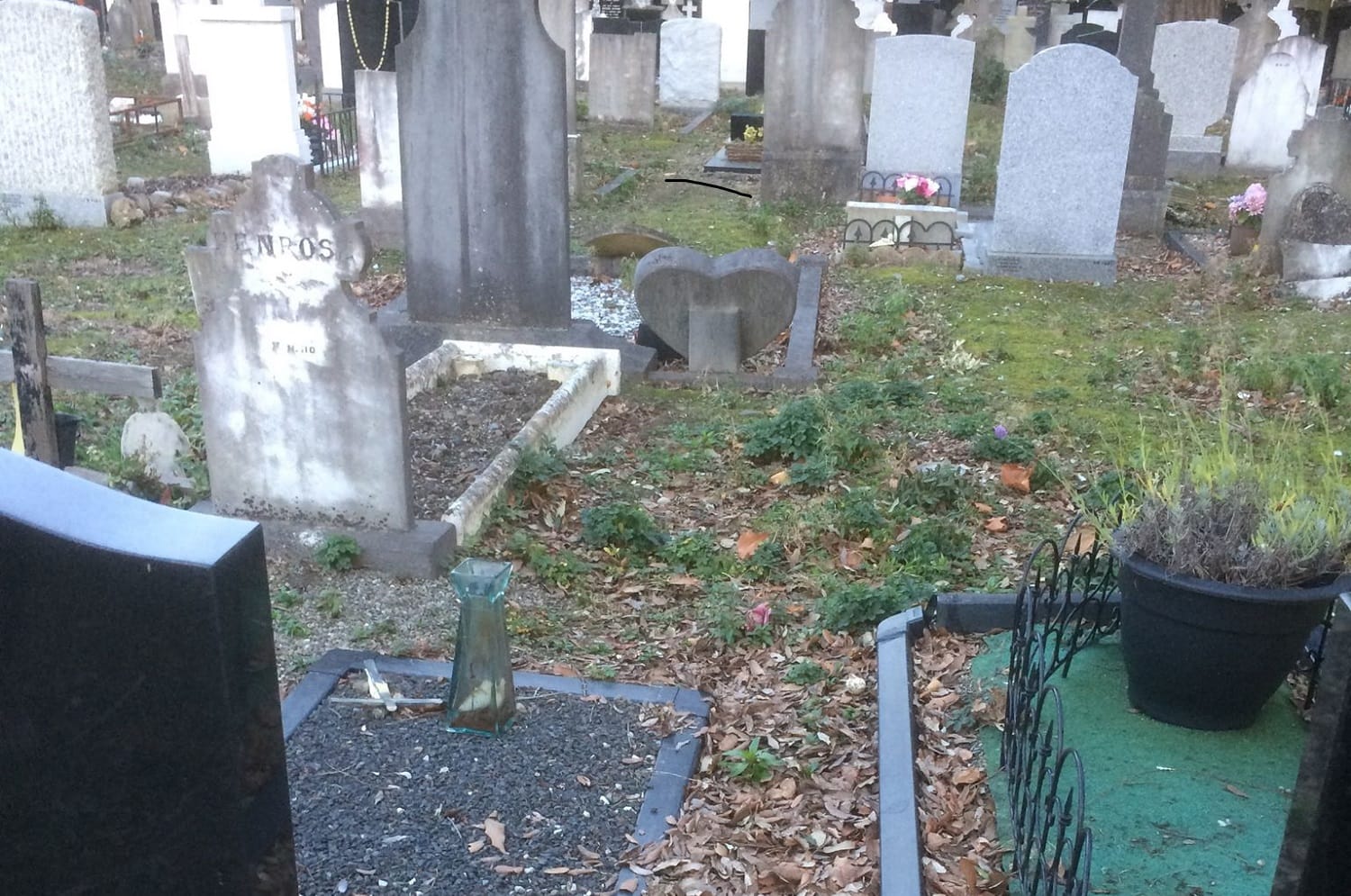What’s the best way to tell area residents about plans for a new asylum shelter nearby?
The government should tell communities directly about plans for new asylum shelters, some activists and politicians say.
How did an English nurse from a Protestant family end up an ardent republican in Rathmines, arrested for vandalising a cinema with a pot of ink?

Most know of Constance Markievicz. They’ve likely heard of Maud Gonne, too.
Dora Maguire, of Rathmines, is a less familiar figure – although she should be better known, says historian James Curry.
Over the past year, Curry, a Dublin City Council historian-in-residence, has been exploring the story of this “unlikely” revolutionary – following a trail that criss-crosses the city from Charlemont Street to Rathmines Road, and north to Glasnevin, too.
How, he wondered, had an English nurse from a Protestant family ended up in Ireland, become an ardent republican, and been arrested for vandalising a Rathmines cinema with a pot of ink?
“I’m interested in activists. I studied labour activism in college,” said Curry, last Friday over coffee.
He stumbled on Maguire’s name in a book, Rebel Irishwomen, while studying for his degree at Trinity College Dublin.
The book, a compilation of 12 profiles of revolutionary woman, had been written in 1935 by a journalist Richard Michael Fox – who was also a friend of Maguire’s. One chapter was about her.
“Even after reading it, I still wasn’t overly sure who she was,” says Curry.
He could find nothing else written about her. “If it wasn’t for the book that came out in the ’30s, she would have been written out of history,” he says.
Maguire died in 1931. “A complete unknown, but she was important for campaigning for political prisoners and trade unions,” Curry says.

Through his research, Curry learnt that Maguire was born in London on 7 September 1889. Her father hailed from Bray in County Wicklow.
She trained as a nurse, caring for people with tuberculosis – which she would later contract.
After a first bout of tuberculosis, she followed her sister Mary, a professional singer, and Mary’s husband, to Dublin in 1920.
Mary Maguire, who sympathised with the Easter Rising, would perform songs at “national gatherings” concealed from the Black and Tans.
Mary’s sister Dora got a job at St Ultan’s Children’s Hospital on Charlemont Street in Dublin 2 in the early 1920s.
For a time, she lived at 9 Belgrave Road in Rathmines, at a home owned nationalist Dr Kathleen Lynn, one of St Ultan’s founders.
She even ran for local elections in the East Ward for Rathmines in 1925, according to an Irish Times report from that year.
Dora Maguire “got herself heavily involved in republican circles and trade union circles”, Curry says. “She was always protesting about prisoners, political prisoners.”
On 6 August 1925, Maguire staged a one-woman demonstration against the British monarchy. She walked into the Princess Cinema on 145 Rathmines Road, concealing a pot of ink.
“They were showing a film about the Prince of Wales in South Africa. They were showing these 10-minute reels,” Curry says.
At that time, the “Prinner”, as locals called it, had an in-house orchestra that accompanied silent films. When the film began and the musicians were playing, Maguire launched her inkpot at the screen.
Newspaper reports from the time describe how the ink splattered the orchestra, splashing onto a female pianist’s sheet music and a cellist’s dress and instrument.
“She destroyed the screen and she destroyed the possessions of the orchestra in front of the screen,” says Curry.
Maguire was arrested and taken to the Rathmines police station. During her trial, which the papers covered, Maguire claimed that the manager of the Princess asked her why she didn’t go to Stella instead.
The “malicious damage”, as the Evening Herald called it, to the screen would cost an estimated £6 and 10 shillings to fix.
Maguire was fined £2 for the incident and ordered to pay £5 compensation to the orchestra members.
“I remember when I was reading those newspaper articles I was thinking, ‘I have to get this stuff out there.’ Because she’s an interesting woman,” says Curry.
The Princess Cinema was a Rathmines institution, showing films featuring movie stars of the day like Mary Pickford, Rudolph Valentino and Charlie Chaplin, according to what’s filed away in the National Library of Ireland archives of film historian Liam O’Leary.
The custom-built cinema had opened in March 1913 as the New Rathmines Picture Palace before being renamed at the end of that year as the Princess – the nickname of one of the director’s daughters.
It had 952 seats, with 150 more in the balcony, according to The Bioscope, a weekly trade newspaper covering cinema.
The Bioscope would refer to Maguire in 1925 as “the charming lady” who “made a blot upon the smiling landscape” of the theatre.
The cinema closed in July 1960 and the building would change hands several times over 22 years before being demolished in 1982, according to O’Leary’s archives and a book on the cinema, The Prinner: the story of the Princess Cinema, Rathmines and Other Dublin Picture Palaces and Cinemas, by former employee George P. Kearns.

In the first-floor foyer of the Rathmines Library today, there’s a remnant of the theatre, though: an ornamental plaque measuring 1.5 feet with white plaster angels.
It was saved by Kevin Harrington, a member of the Dublin Historical Society, who saw the demolition crew readying the bulldozers in January 1982 on Rathmines Road.
A foreman helped Harrington to pry it off, and he donated it to the library. Curry says he discovered the plaque while researching Maguire.
“My focus was on Dora so I didn’t find out too much about the theatre. I thought it was an interesting piece of history,” he says.
During his research, Curry found an article written by Maguire for An Phoblacht, a weekly newspaper published by Sinn Féin. She wrote under the name Banaltra, which is “female nurse” in Irish.
The article, “Slave Women”, is a graphic account of a Dublin workhouse, where the destitute laboured in exchange for room and board.
Maguire wrote about the Dublin Union, which would act as a municipal hospital where outcasted women with little training would work as nurses, in a system that failed the “pauper” women and the sick and infirm.
“They work, scrubbing, nursing. Washing twelve to fourteen hours every day or night of the week, many for years on end, without even one day’s rest,” wrote Maguire, of the “pauper nurses” in her article.
“Their diet is […] recently described as “insufficient for people on light work or exercise”, it says.
“These slaves, as one would expect, become, in their turn, tyrant, whenever possible, and the treatment of the sick under their care is diabolical,” she wrote.
Maguire suffered from tuberculosis and general poor health throughout the 1920s, says Curry.
She moved out of her home on Rathmines Upper Road to live with her sister and brother-in-law in Dundrum and then died in 1931, he says.
After her death, An Phoblacht outed her as the author of the “Women Slaves” article. She was “a friend to the poor”, the newspaper wrote.
On 21 February 1974, an article published in the Irish Press recalled her commitment to protesting for prisoners’ rights with other nationalist women. “None was more selfless or dedicated than Dora Magure,” it said.
She had been a “familiar figure” on public platforms and in street demonstrations, it says.
Maguire’s last crusade was against the conditions in the Dublin Union. “She […] was embarking on an extensive campaign for its reform when she died on February 21st, 1931.”
Researching Maguire was difficult for Curry. “Normally the process of researching someone is straightforward because they’re Irish,” he says.
Rebel Irishwomen had the only written account of her life, and parts seemed as much eulogy as fact.

Online databases held her birth certificate and census records, he says. But Fox had failed to mention Maguire’s marriage to a man called Seamus Cavanagh in 1929.
“When she died, her name was Theodora Cavanagh. It was a bit difficult finding her death cert and her grave,” he says.
Eventually, Curry tracked down her grave in Glasnevin Cemetery, where several Irish nationalist figures are buried.
Maguire is buried in the St Patrick’s section. There’s a small, rectangular patch of grassy land flanked by other graves with headstones.
Curry had ordered her grave number from Glasnevin Cemetery and found her by searching there. It’s unmarked. “You can’t tell that it’s a grave at all,” says Curry.
He’s unsure why there’s no headstone. Was she cut off from her family? If so, Curry doesn’t know why. But he’d like to see a marker or plaque on her grave.
“I would like her to be remembered,” Curry says.